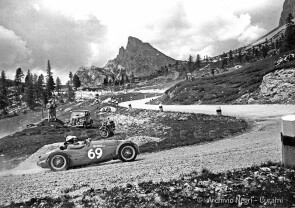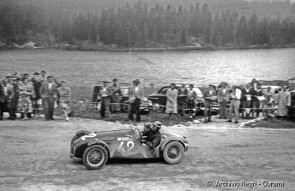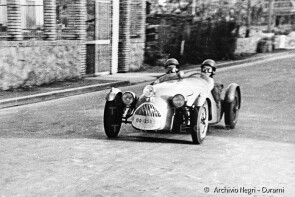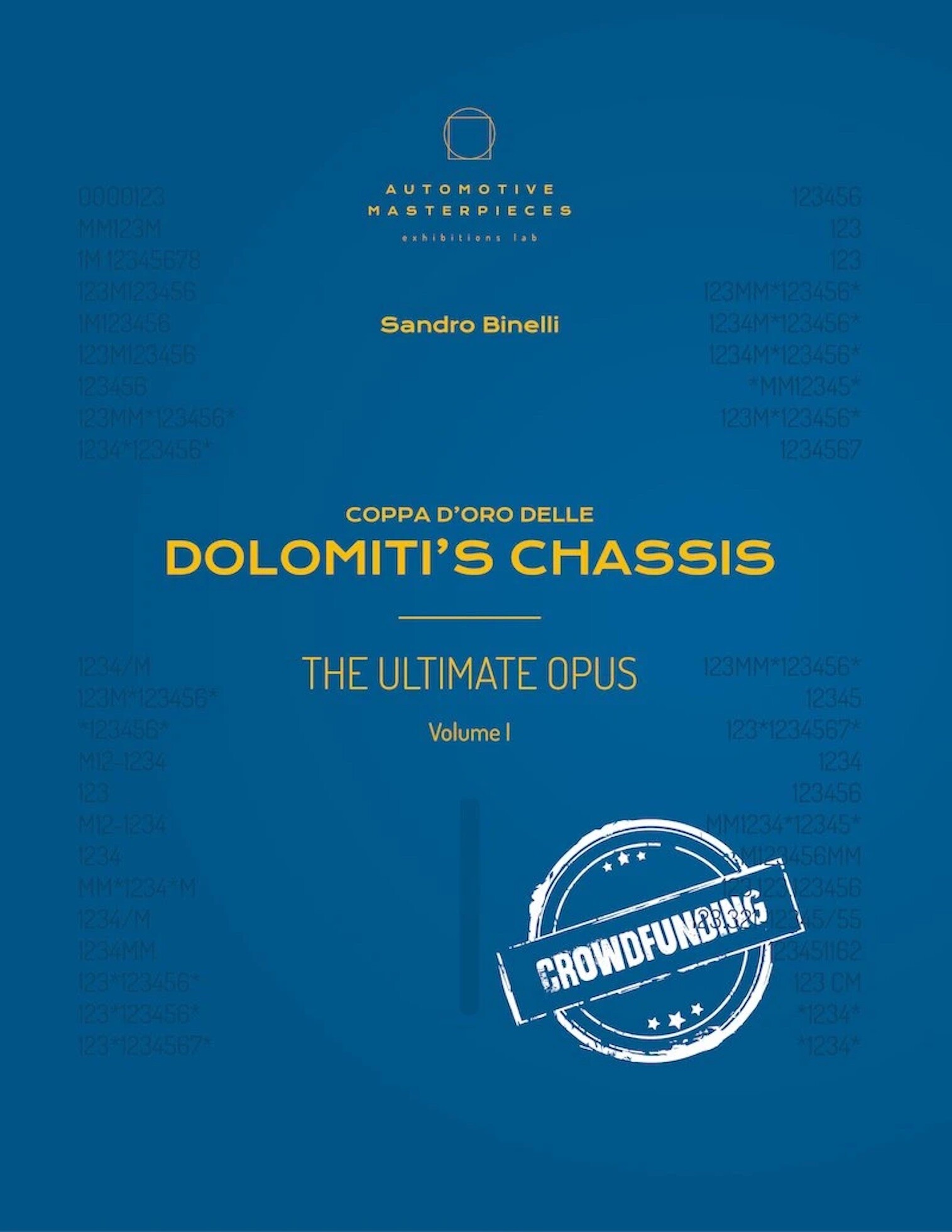
1948 Fiat derivata Stanguellini 750 Siata
ON/OFF
Why am I an Automotive Masterpiece?
G. Team cars
Scuderia Treviso (I)
The history of the Stanguellini brand began in 1900 in Modena from the passion of Francesco Stanguellini. In the early years of the twentieth century, the brand grew in importance by participating in motorcycle races and, above all, by dedicating itself to car processing. From 1936, it entered the production of its own models derived from Fiat and Maserati chassis with the 750, 1100, and 2800. In 1937, the first racing team was formed, which began a series of victories, culminating in first place in its class (50th overall) at the XII Mille Miglia in 1938 with a Stanguellini 750, bringing the team to international recognition. From then on, both national and international successes flourished. In the late forties, the company also produced high-tech car chassis and engines. Stanguellini is the perfect postcard of Postwar Italian Renaissance and Ingenuity. The cars achieved significant improvements and results but, at this point in the story, werestill barely known as “Stanguellini” and mostly as “derivazione FIAT”. After WWII, the Stanguellini cars were absolute winners. With the changing of the Sport rules, Vittorio Stanguellini could develop his cars again. They were barely the FIATs of the beginning: around a highly reworked aspirated engine, a rigid tubular chassis was built on the design of engineer Alberto Massimino. For the bodywork, pure aerodynamics was conceived with attention to the agility of the car: this way, the “Siluro” with motorcycle fenders and the “Barchetta” were born. Every component was reworked. The engine developed from a Single Cam-In-Block with pushrods to a double Overhead Cam. Heads themselves were already changed from cast iron to light alloy. Gentle and inventive, Vittorio always worked in a family-dimension, with men like the foreman-tester Renato Cornia and professionals who were first of all friends. This was happening right in the heart of Modena, in a small cluster of streets, while a few hundred meters away, Ferrari and Maserati were rising to the stars. But, as they say, with great respect for each other.
The 1948 Fiat derivata Stanguellini 750 Siata, with chassis CS04073, was originally equipped with a single-cam engine. Owned by the Stanguellini company until August 1951 (and is therefore an ex works, to all intents and purposes), was entered in the Mille Miglia in 1949, with the Curatolo - Grasselli crew and in 1950 with the Suppi - Terragnoli crew. In both editions the car did not reach the end of the race. In 1951, however, the car entered with the Venezian - Albarelli crew finished 69th overall and 5th in class. The experience at the 1952 Mille Miglia, driven by the new owner and driver, was also positive. The car finished 149th overall and, in any case, 7th in class with the Rugolo - Mazzoccato crew.The participation of the chassis CS04073 in other sporting events was also intense. From 1949 to 1954 there are proven testimonies of the car competing in at least 25 events, among the largest in Italy at the time. The racing drivers who will conduct it most frequently were Bruno Venezian, Renzo Rugolo and Sergio Monti. The 1948 Fiat derivata Stanguellini 750 Siata, with chassis CS04073 is known today with its Scaglietti bodywork,with a line that recalls, on a small scale, the Ferrari granturismo spider at the turn of the 50s and 60s (it looks like a small Ferrari California), but the car received this bodywork only after its racing career and after it had competed four times in the Mille Miglia, where it always participated in an essential “siluro” shape, as evidenced by the photos of the time.The current bodywork attributed to Scaglietti, on the other hand, is currently undergoing a thorough restoration by the well-known specialist Cognolato, on behalf of the owner, the important private collection of Corrado Lopresto.







